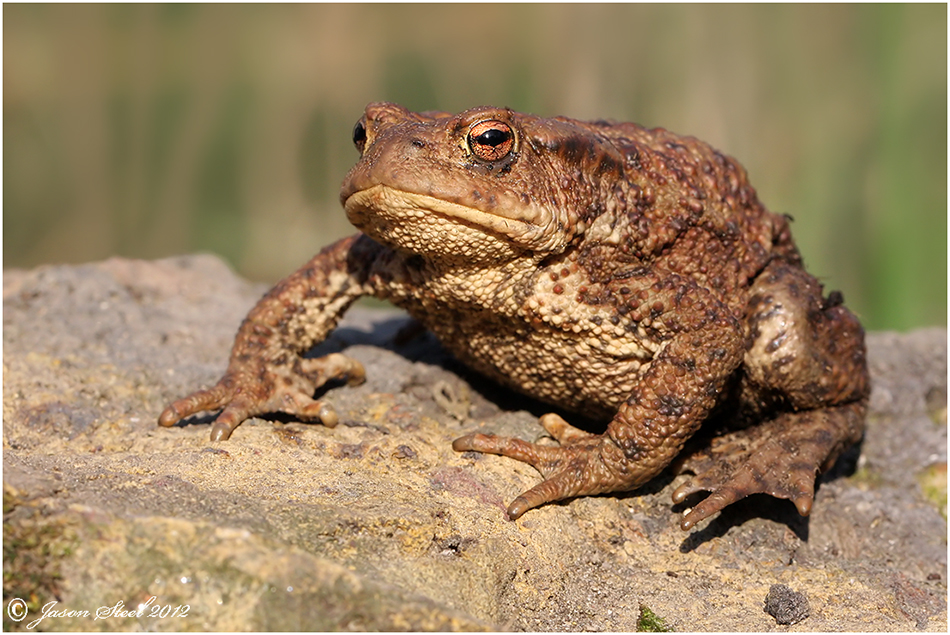
The Common Toad (Bufo bufo)
The Common Toad grows to around 10-13cm in length for females and 8cm for the smaller males. They can be recognised by their warty granular skin. Common Toads can live for up to 40 years in captivity, but in the wild they have an average lifespan of 10-12 years. Their main predators are the grass snake and hedgehogs which unlike most predators are not put off by the irritant fluids found on the toad's skin. Unlike the Common Frog all Bufo species possess paratoid glands, which produce a highly toxic secretion that's secreted through the toad's warty skin. This toxin is powerful enough to cause mammalian predators, like foxes or dogs, to vomit and foam at the mouth if they catch a toad. Most predators quickly learn to avoid eating toads because of this toxic secretion. These toxins are also found in the tadpole stage of the Common Toad too. Common Toads are also hunted by Badgers, Brown Rats and many birds including Herons, Corvids, Raptors. Corvids are known to specifically target the internal organs of frogs and toads and it is common for these amphibians to be found dead with puncture wounds to their sides after being killed by corvids.
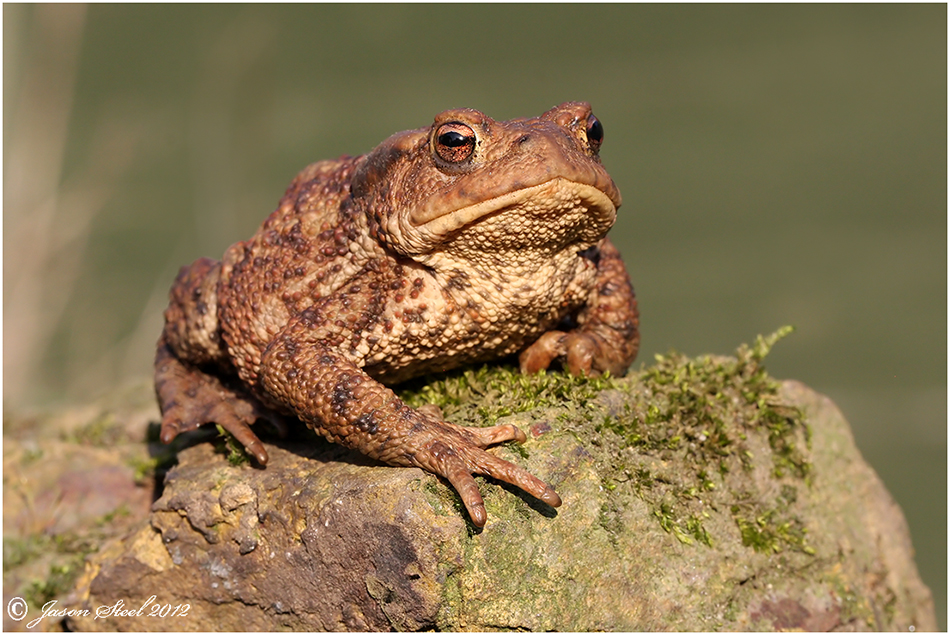
The Common Toad returns years after year to the same breeding pond at the end of winter, usually around February or March. Toads generally prefer larger, deeper ponds to the Common Frog. On a damp evening when the night time temperatures are around 7 degrees or higher the toads simultaneously begin their mass exodus back to the pond. Males generally arrive first and females arrive shortly after. Many will pair up before they reach the pond. Breeding occurs for about a week and spawn is laid in long double strings of jelly-coated eggs. Once mating has finished the toads will leave the pond and begin their journey to their feeding grounds. Common Toads are frequently encountered in gardens and woodlands.
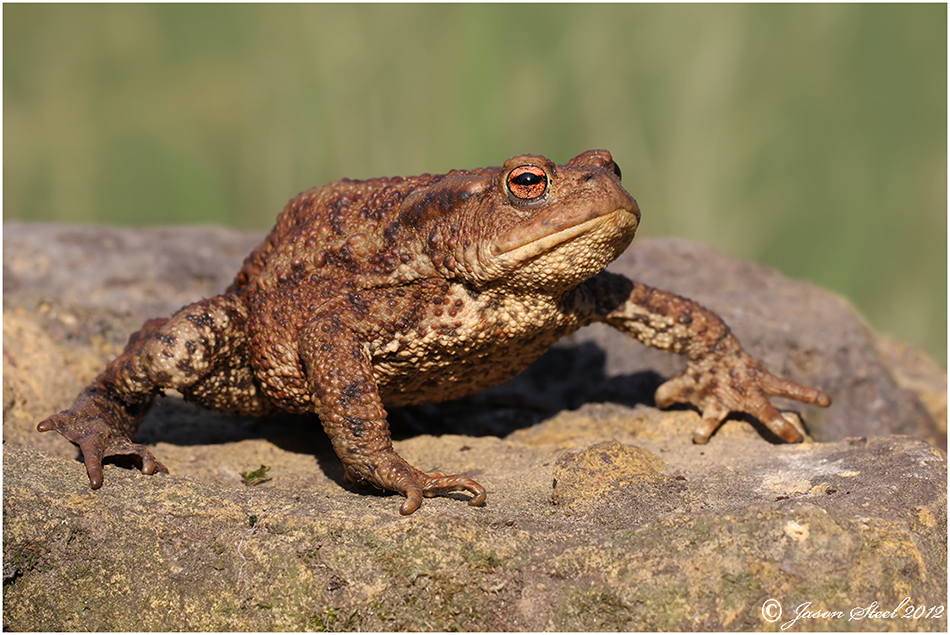
Common Toads are most active at night and prefer warm damp nights where they will go out in search of insects, slugs and earthworms to feed on. Common Toads have shorter legs then Common Frogs and tend to walk rather than hop as they travel across land.
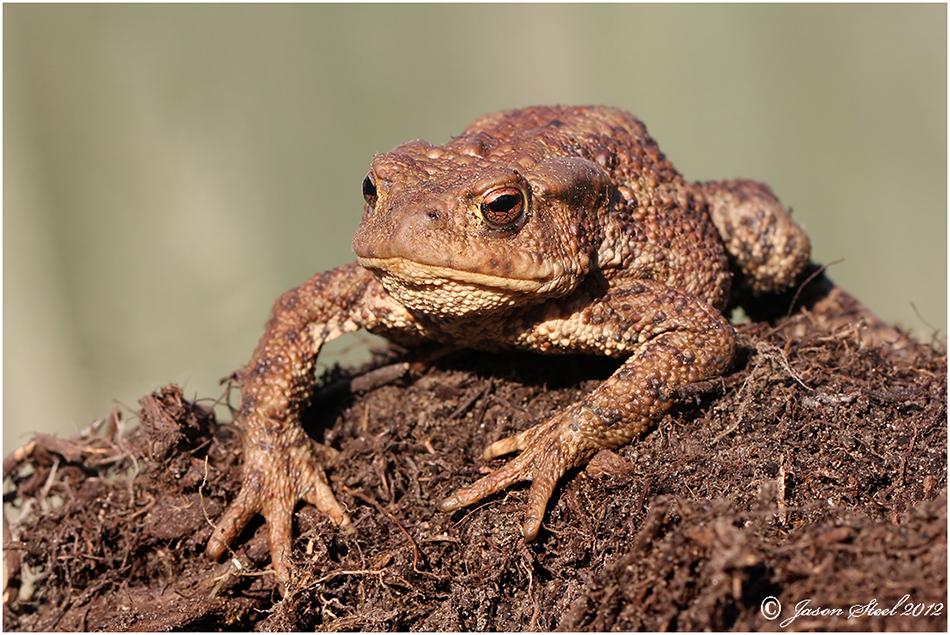
Studies have shown that Common Toads appear to be able to sense the approach of an earthquake and have been known to quickly evacuate an area just days before an attack.
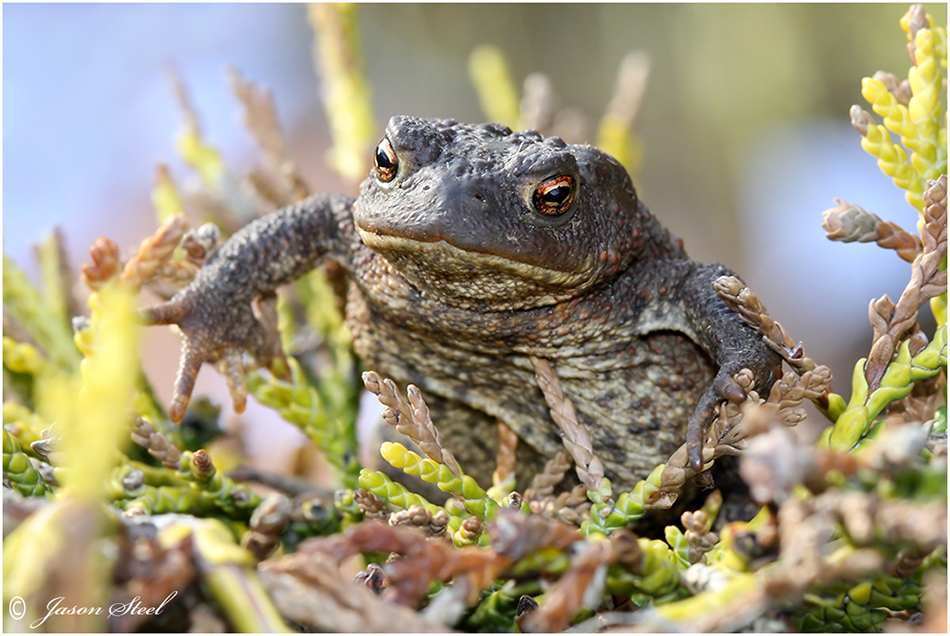
In February - April, at the first signs of Spring approaching, adult toads begin their migration to the breeding site. This often means having to cross busy roads on their way and many fail to survive the journey. One possible solution is to construct 'toad tunnels' beneath our roads to allow the travelling toads safe passage.
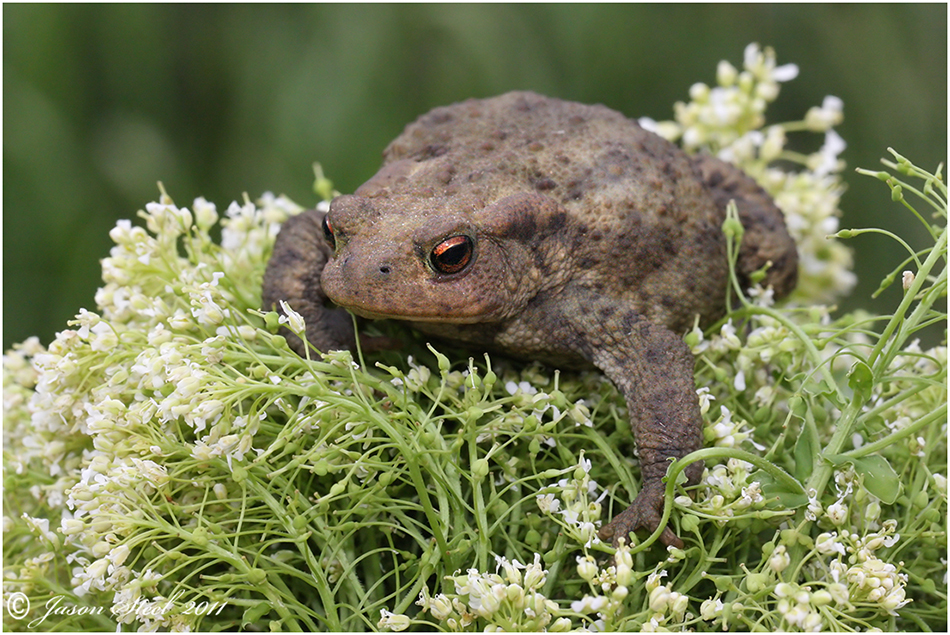
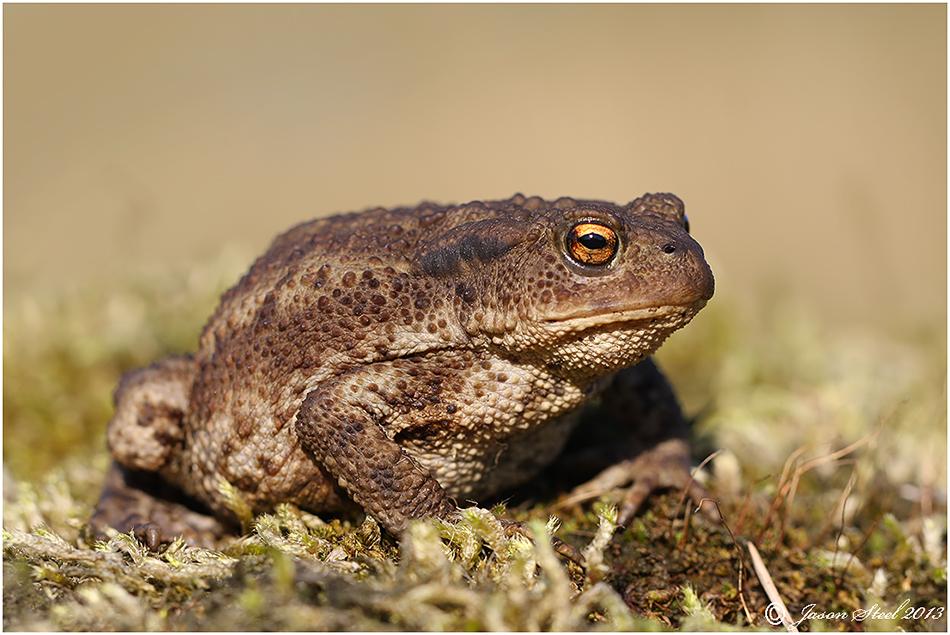

. . . . . . . . . . . . . . . . . . . . . . . . . . . . . . . . . . . . . . . . . . . . . . . . . . . . . . . . . . .
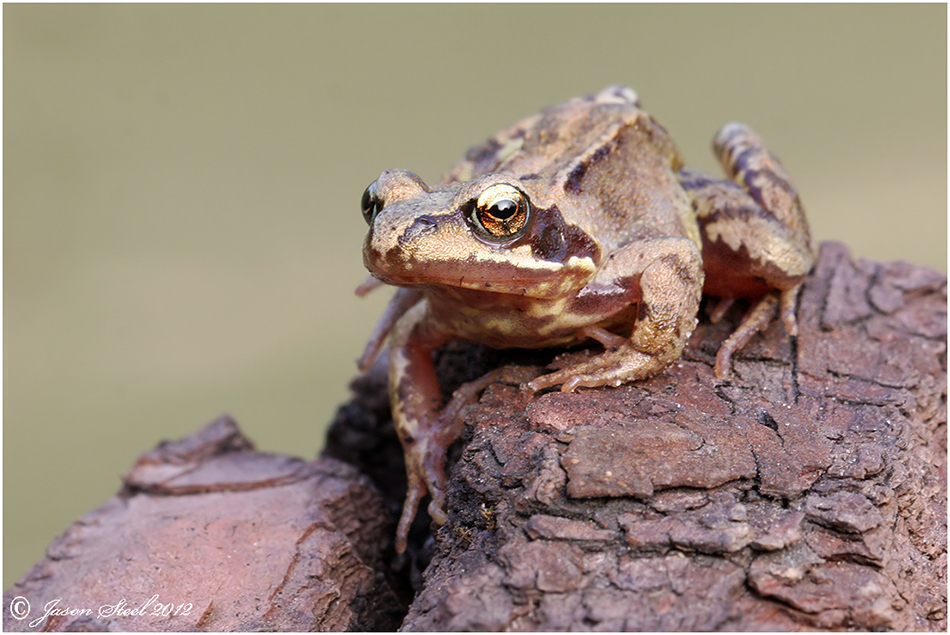
The Common Frog (Rana temporaria)
The Common Frog is found right across the UK. It is also found right across Europe even into the Arctic Circle. Living for around 7-8 years the common frog could exist in numbers of up to 8 million in Great Britain but research suggests that this number could be falling.
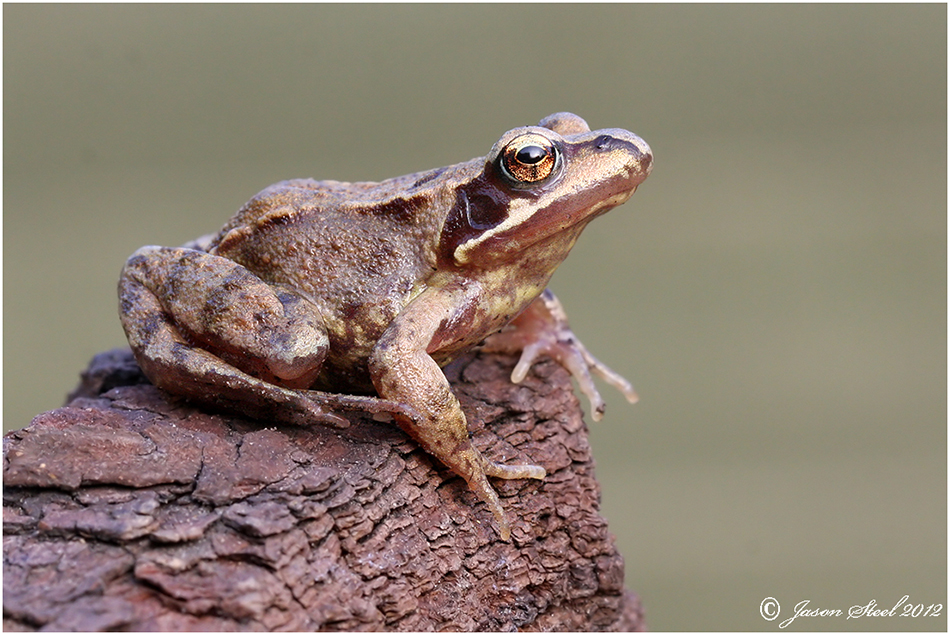
Building a pond with shallow areas in your garden usually attracts breeding frogs within 2 or 3 years if the conditions are right.
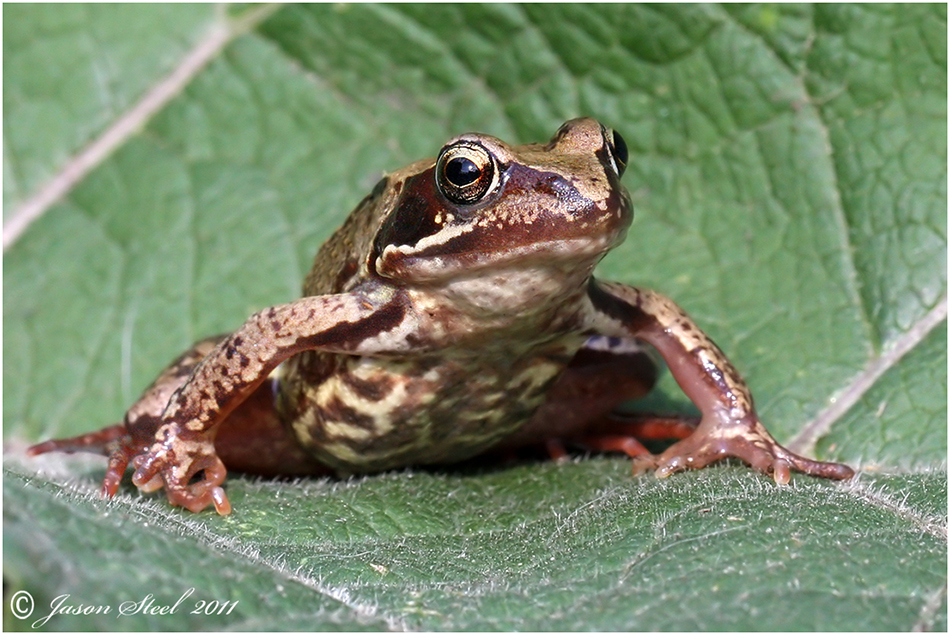
Attracting frogs into your garden by building a pond is a great way to control the numbers of slugs and snails without the use of harmful pesticides. Frogs often lay thousands of eggs in their frog-spawn during early Spring. This vast number of eggs is necessary as only a handful out of every few thousand eggs will mature to adult breeding frogs.

Most adult Common Frogs are between 6-9cm in length. Some can be considerably larger especially the females which are usually bigger than the males.
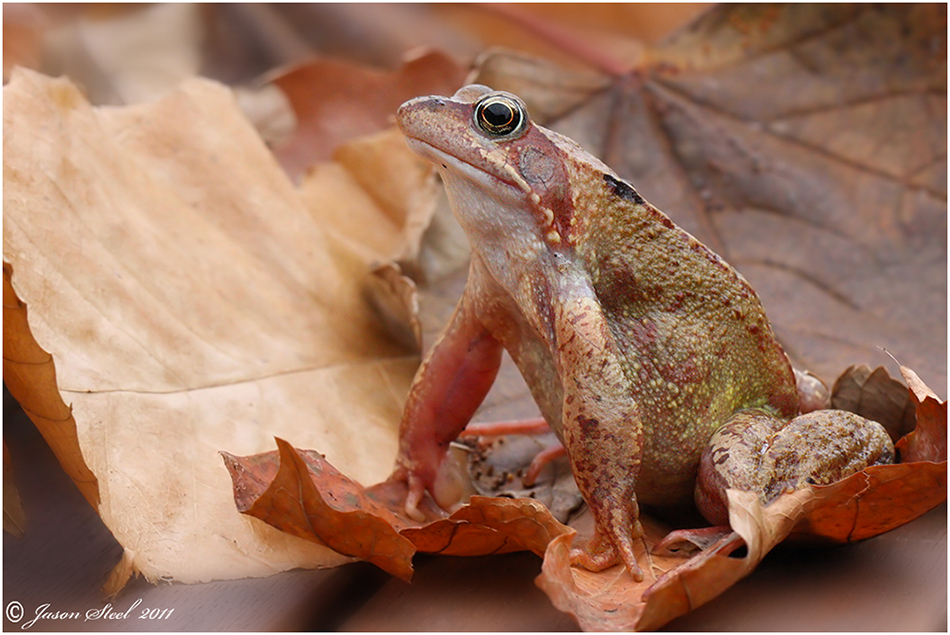
The frogs ability to breath through its skin enables it to hibernate at the bottom of ponds beneath mud and rotting leaves for several months if necessary. The Common frog is mostly terrestrial outside of the mating season and can be found in gardens, woodlands and grassy fields but usually not too far from water.
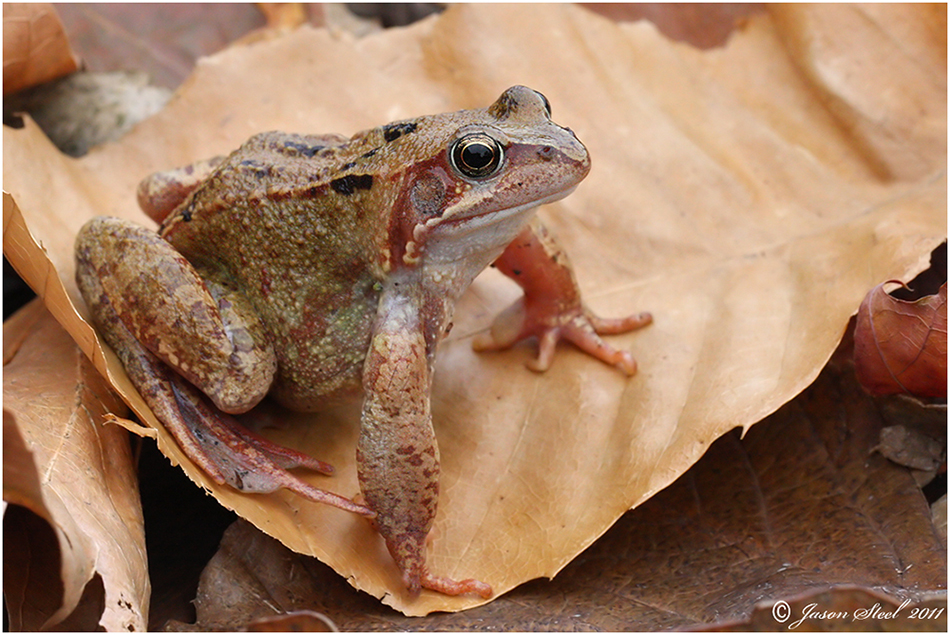
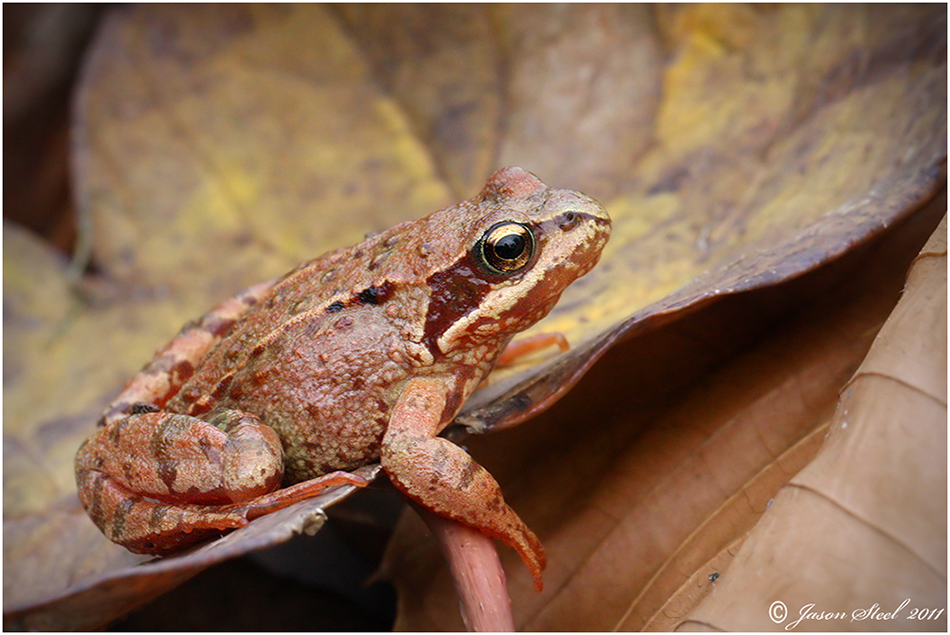
It is widely believed that Common Frogs have the ability to lighten or darken their skin over time in order to match their surroundings. There are claims that Common Frogs also have the ability to change colour as well as shade but to what degree is unproven at the moment.
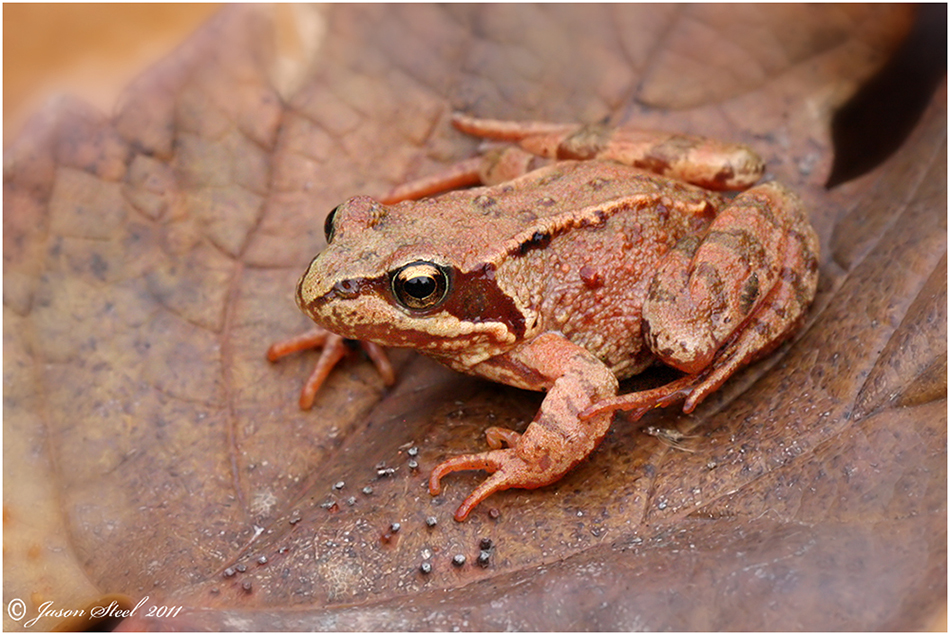
The skin colour of the Common Frog can vary from grey-green-yellow-brown. Occasionally reddish examples like these are found but these seem to be more common in Scotland than the rest of the UK.
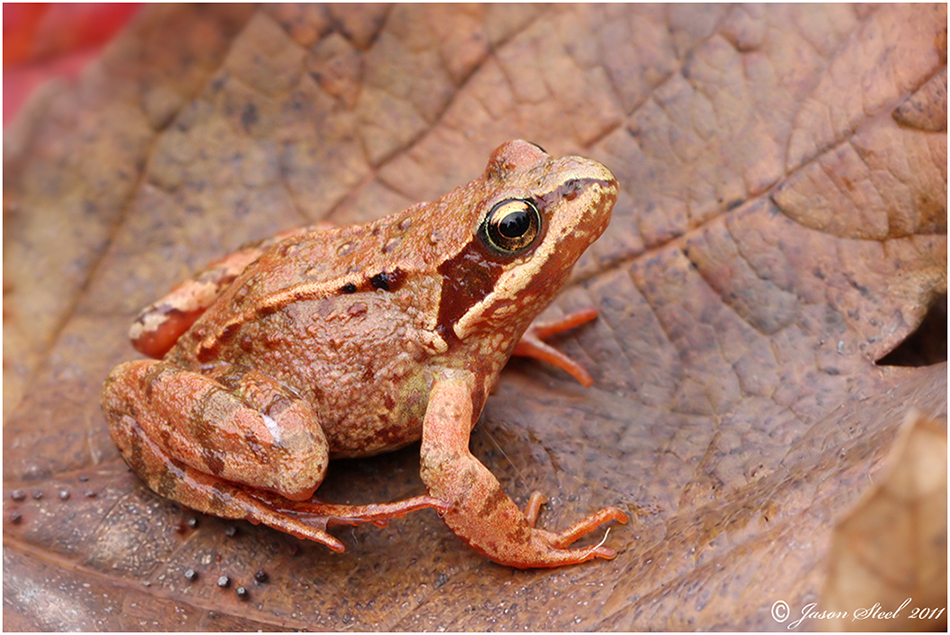
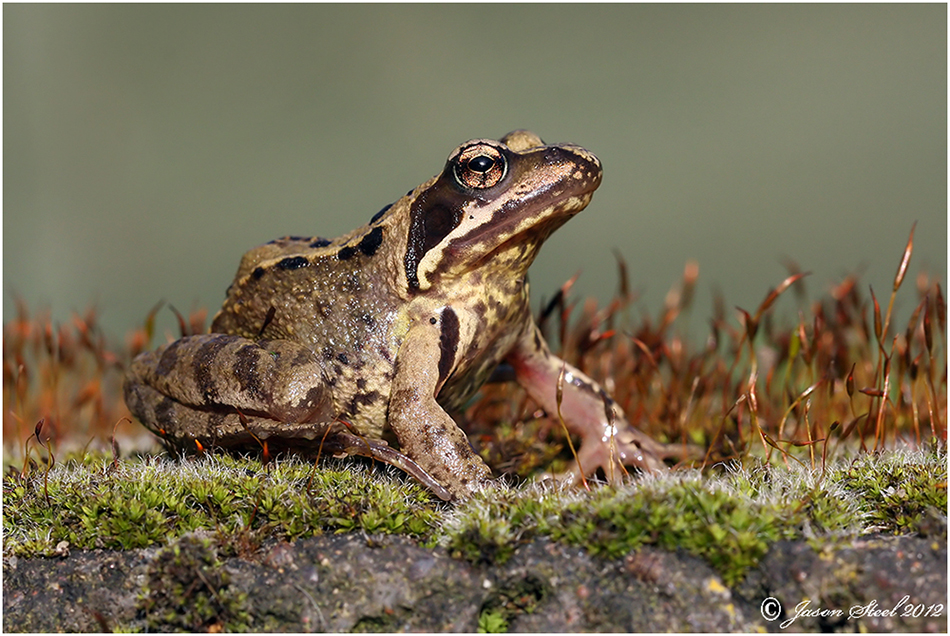

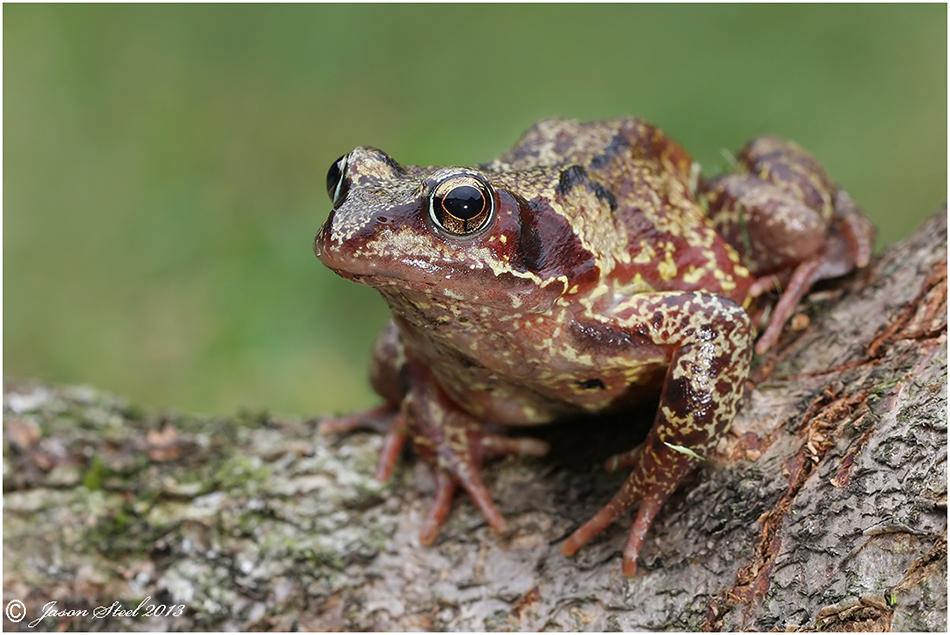
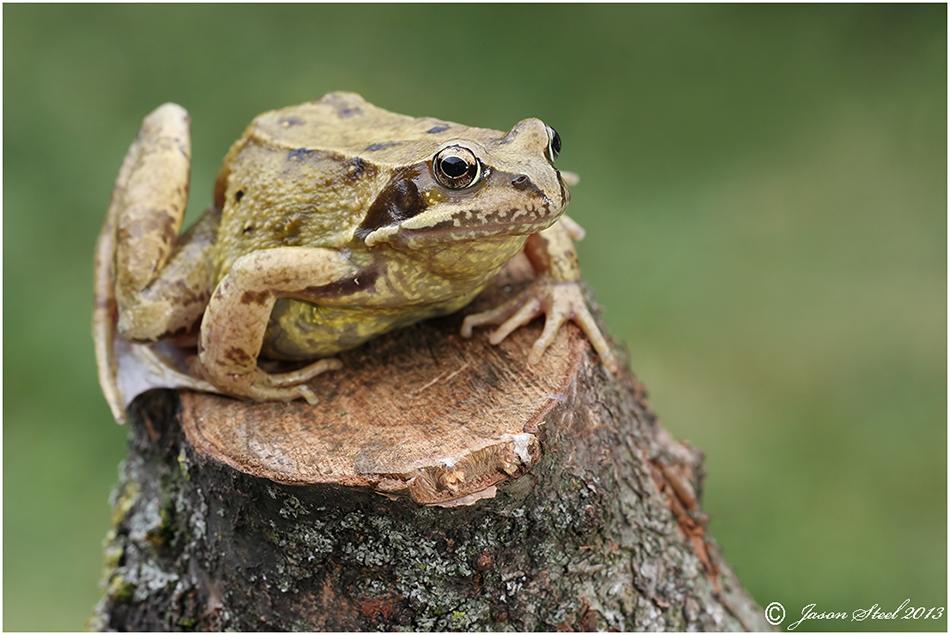
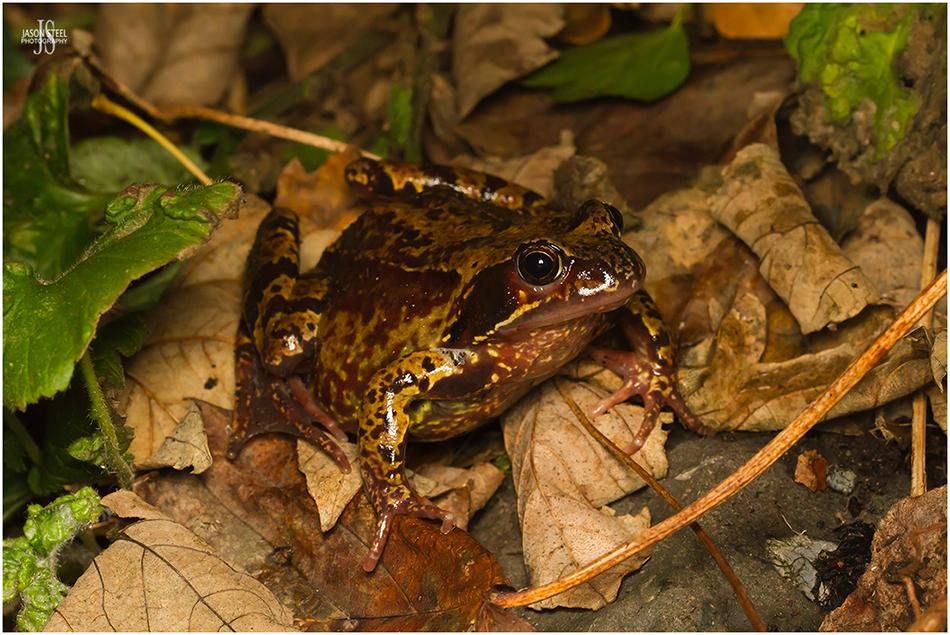
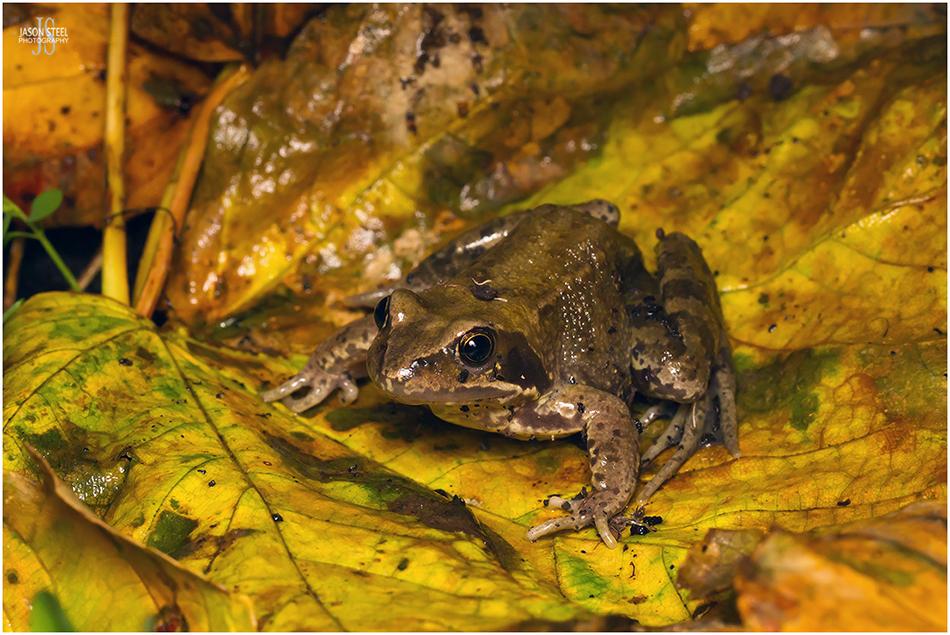
Sub-adult Common Frog. Photographed hunting for slugs and worms amidst the autumnal leaves at night in the rain in my garden in SE London, 16th November 2020.
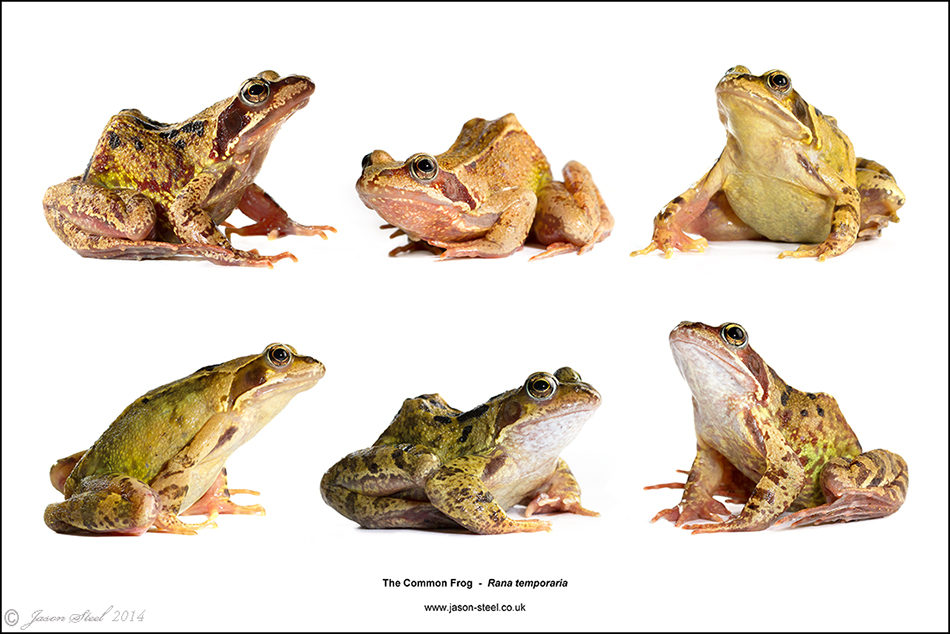
These six Common Frogs were all residents of my back garden. This photo shows the variation in colours, shades and shapes that Common Frogs can be found in even on the same site.
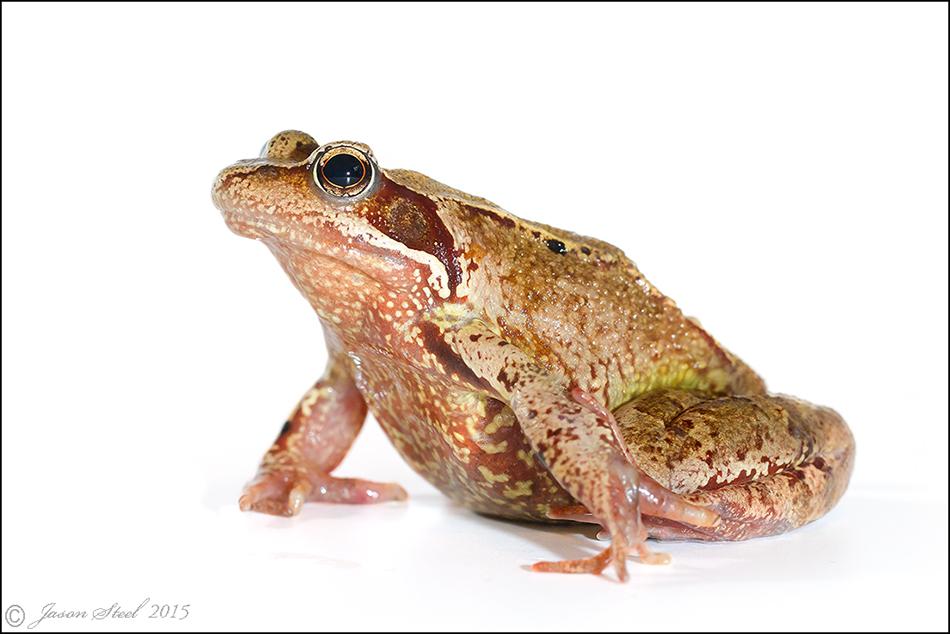
This female adult Common Frog shows the classic speckled throat as opposed to the plain pale throat found on the male. She also displays rich red / yellow marbling on her belly, and granulated flanks which are smooth on males. This granulated skin may assist male frogs to secure on embrace during the mating process.
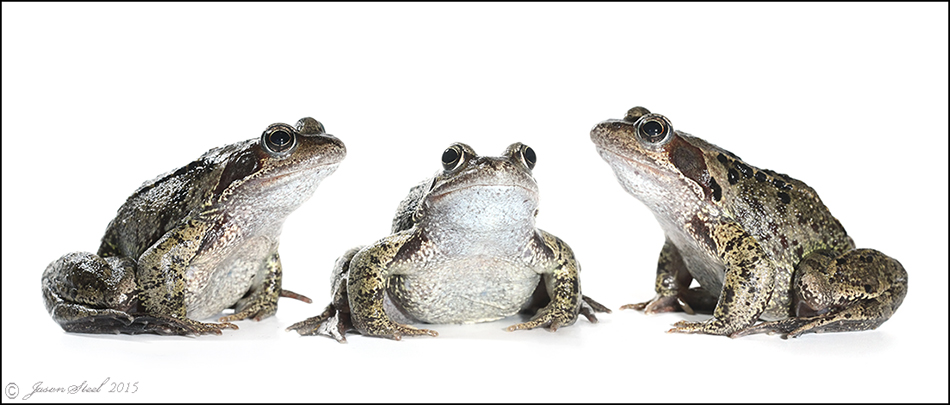
An adult male Common Frog.
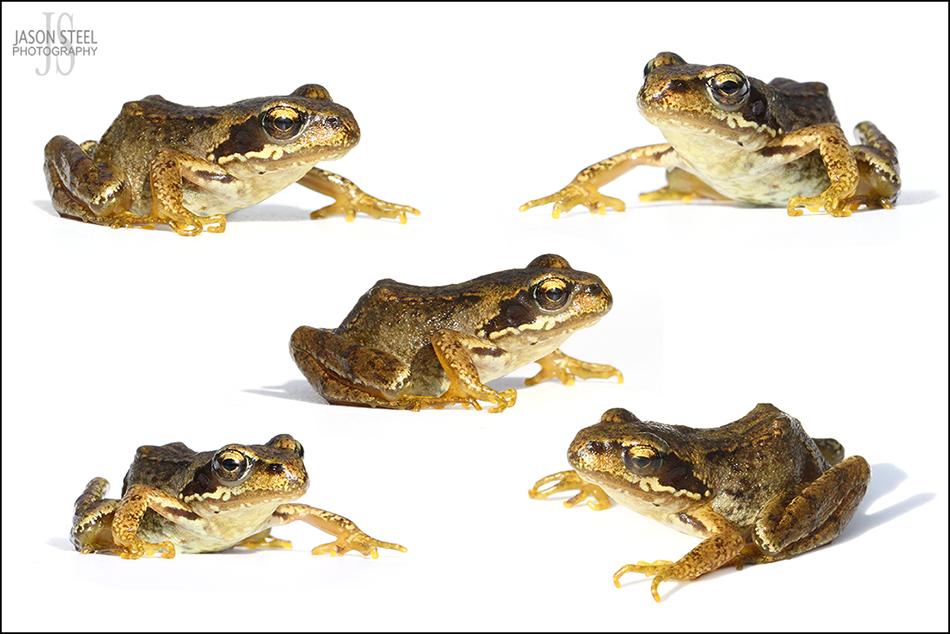
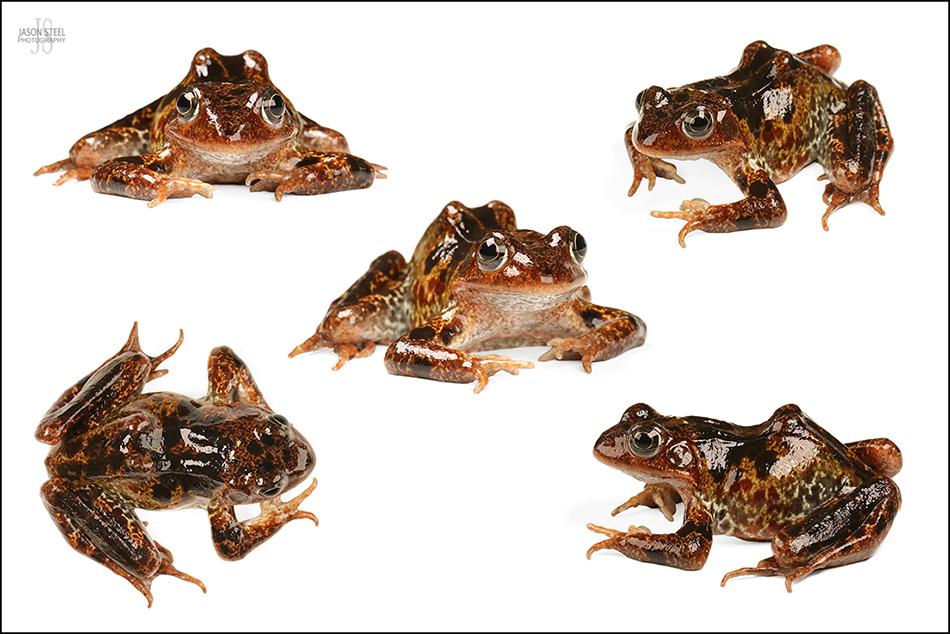
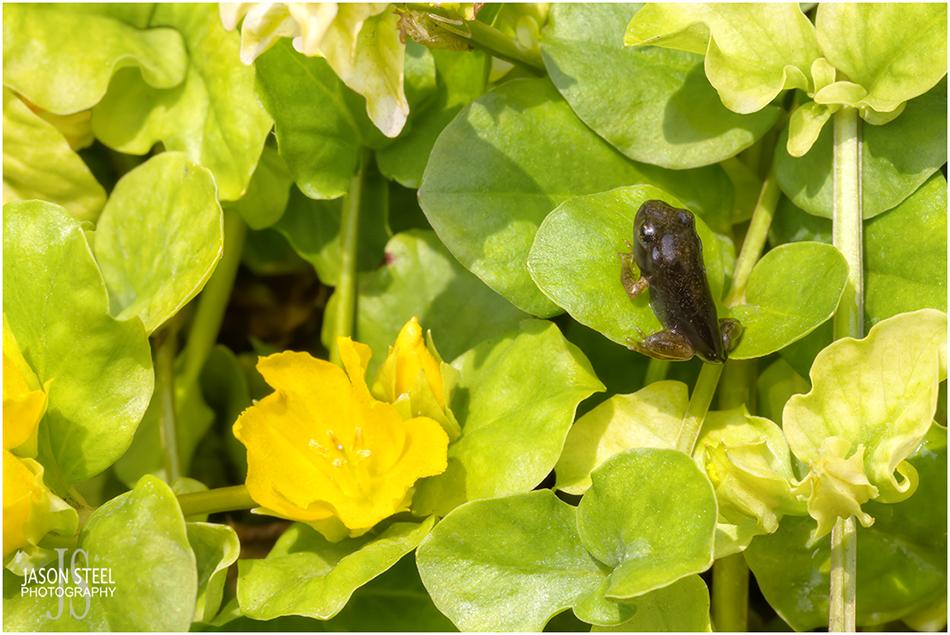
It's important to have over-hanging vegetation around one end of any garden pond to enable froglets and toadlets to climb out of the pond for the first time when they are ready.
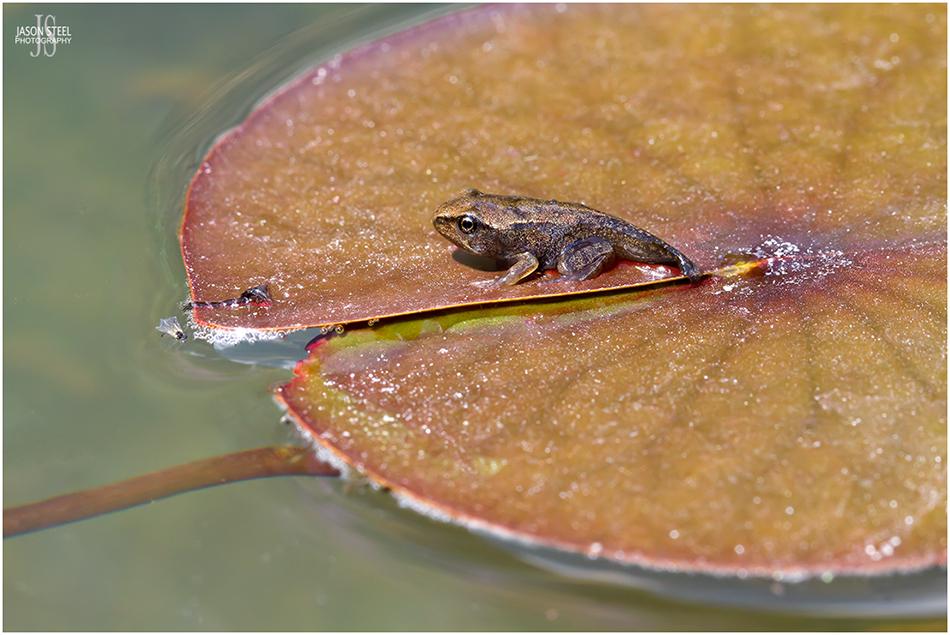

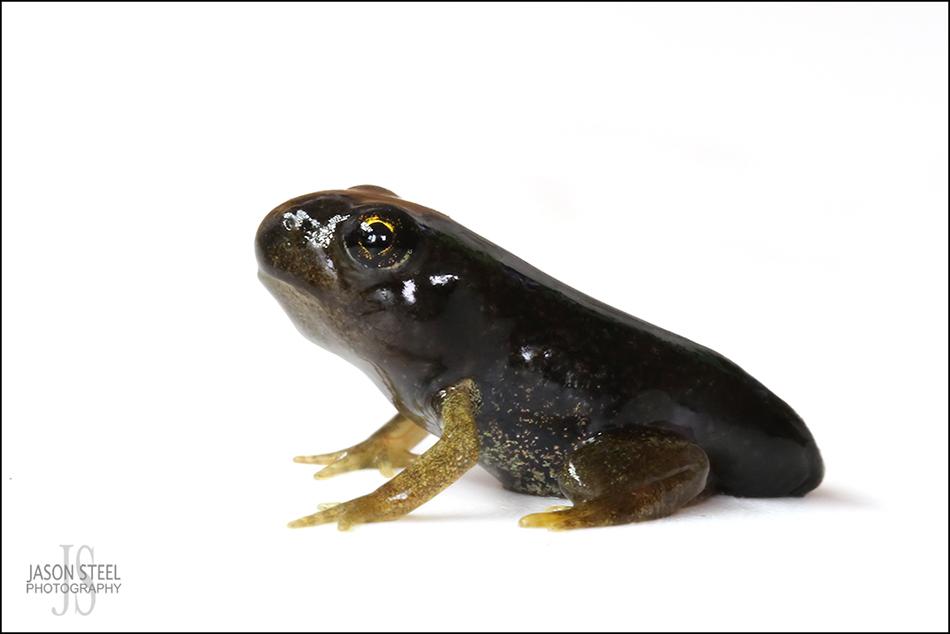
This tiny froglet was only 8mm in length and had just left the pond water for the first time. Juvenile frogs may hang around the edge of the pond on floating vegetation for some time before dispersing onto dry land.
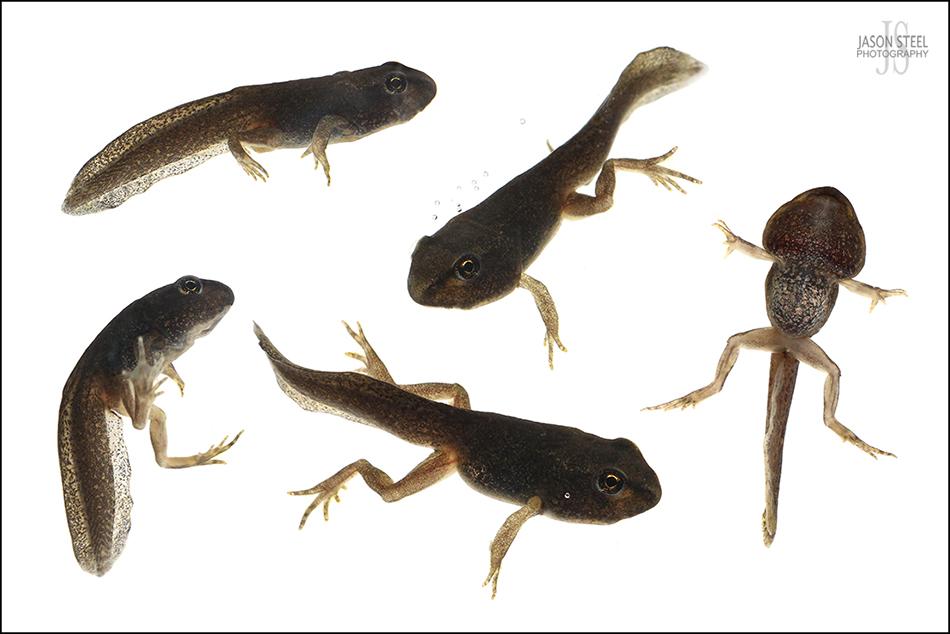
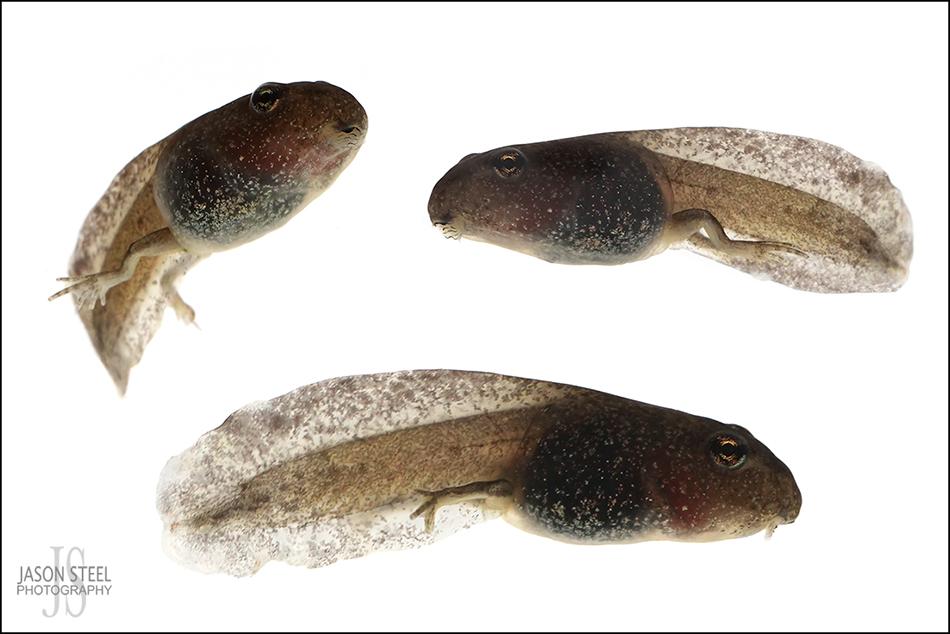

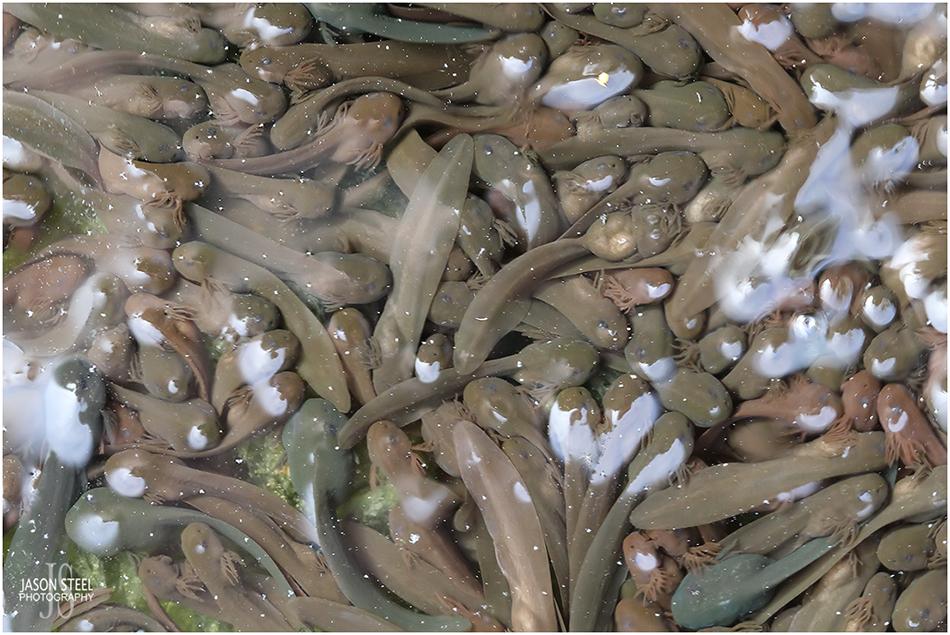
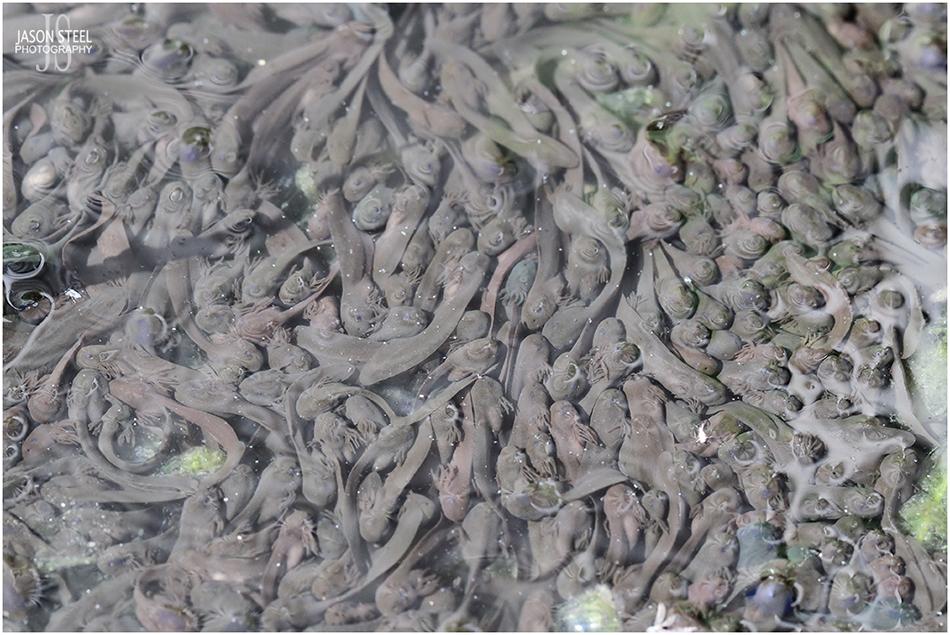
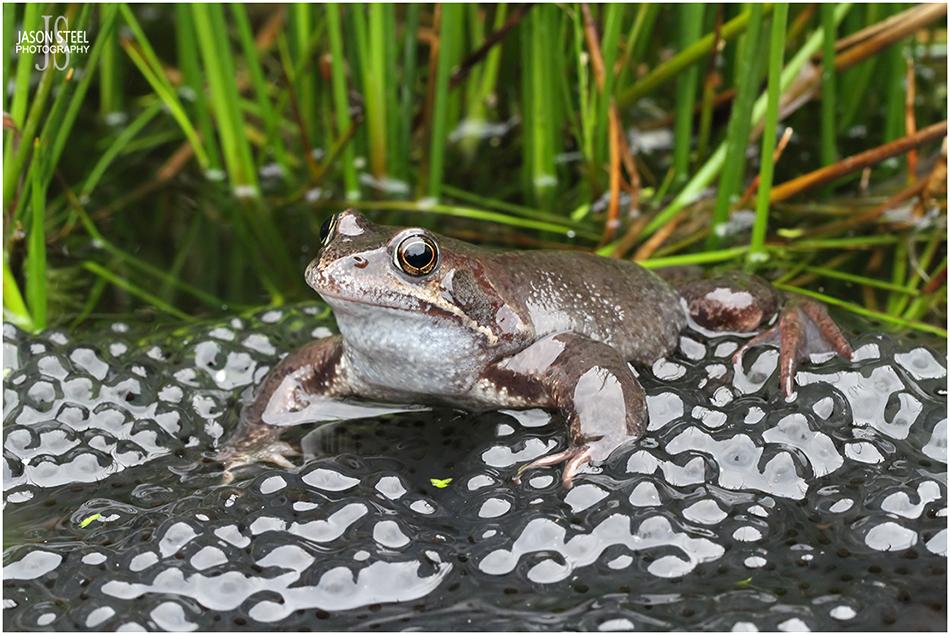
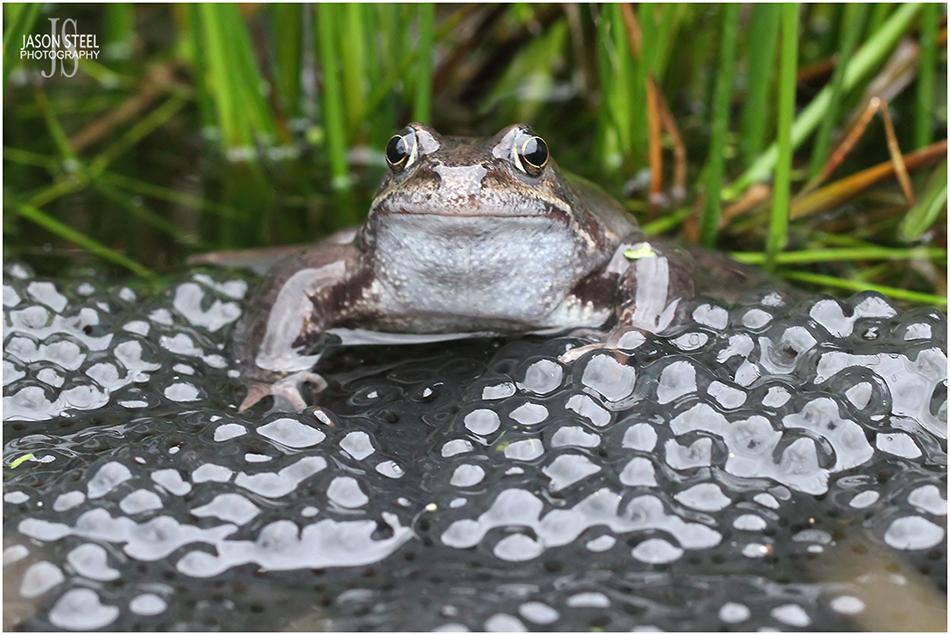
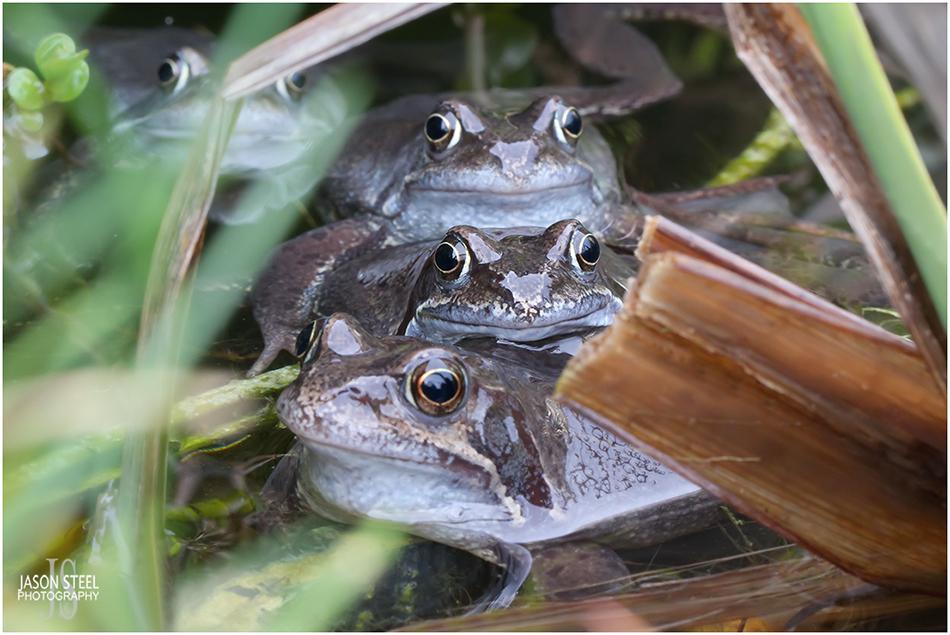
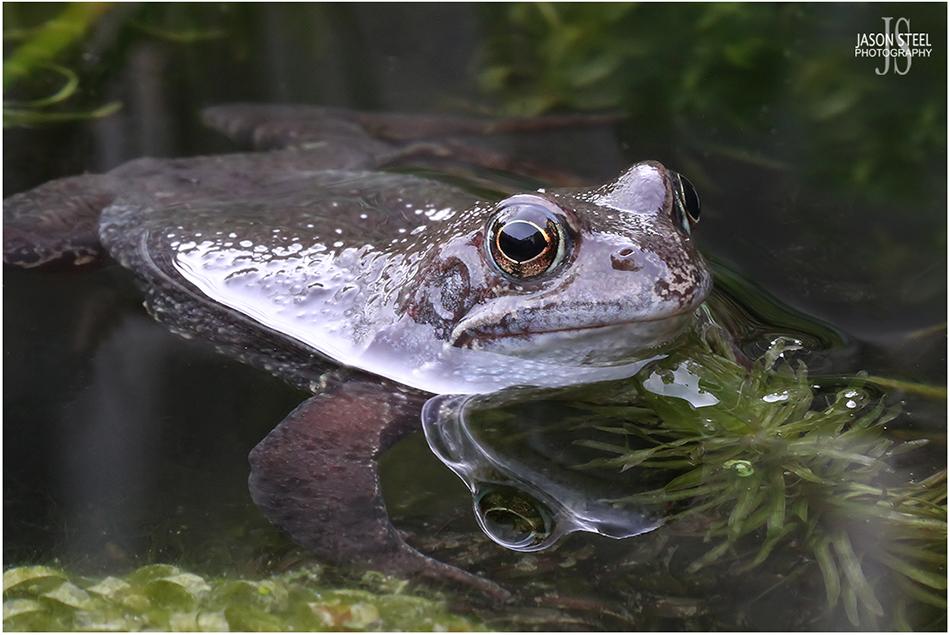
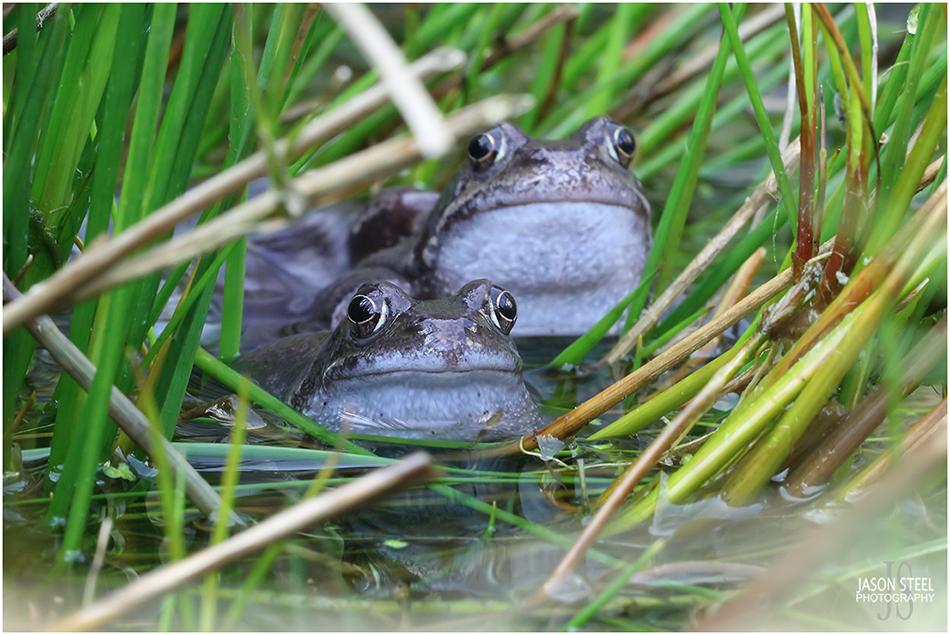
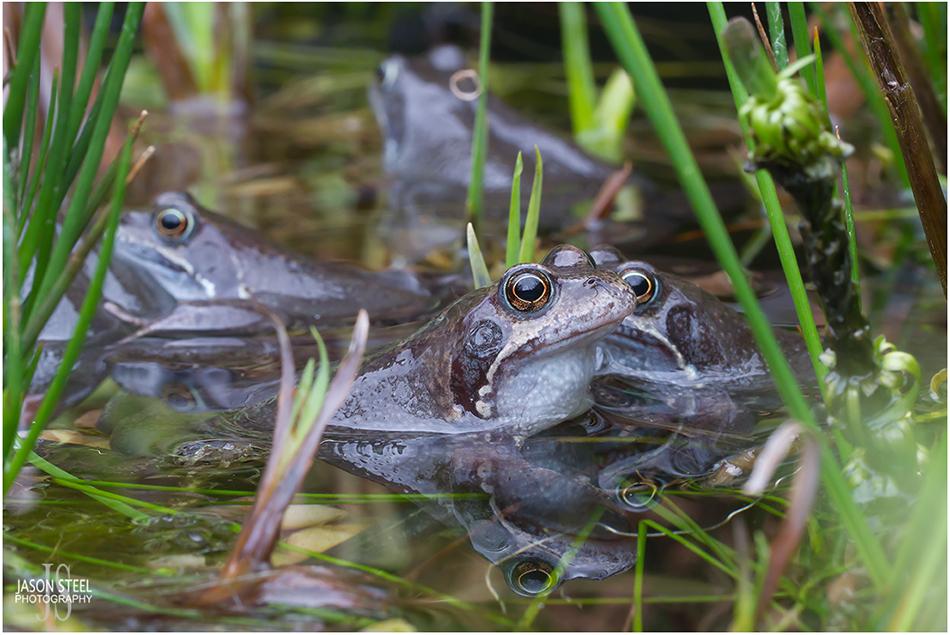
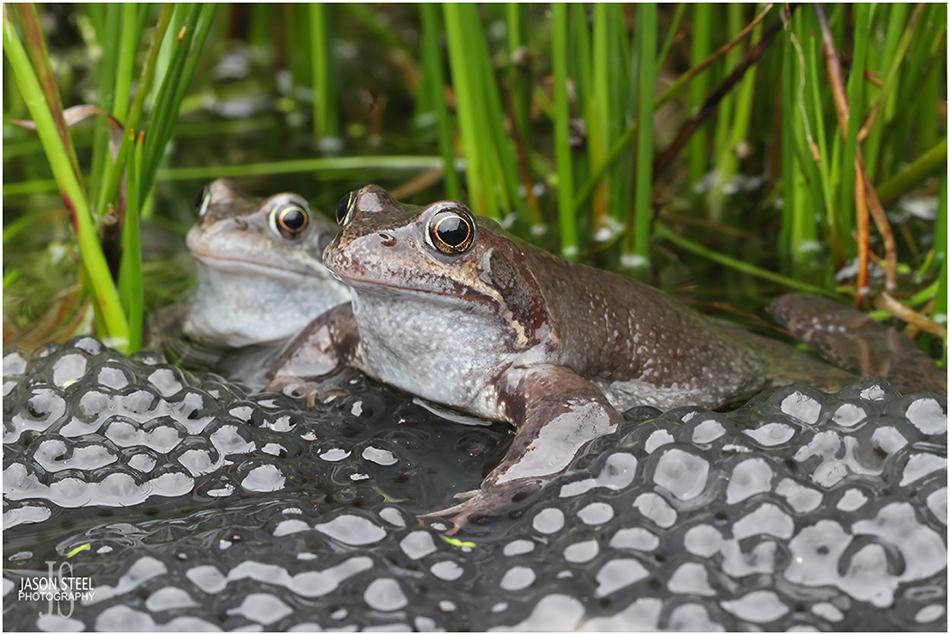

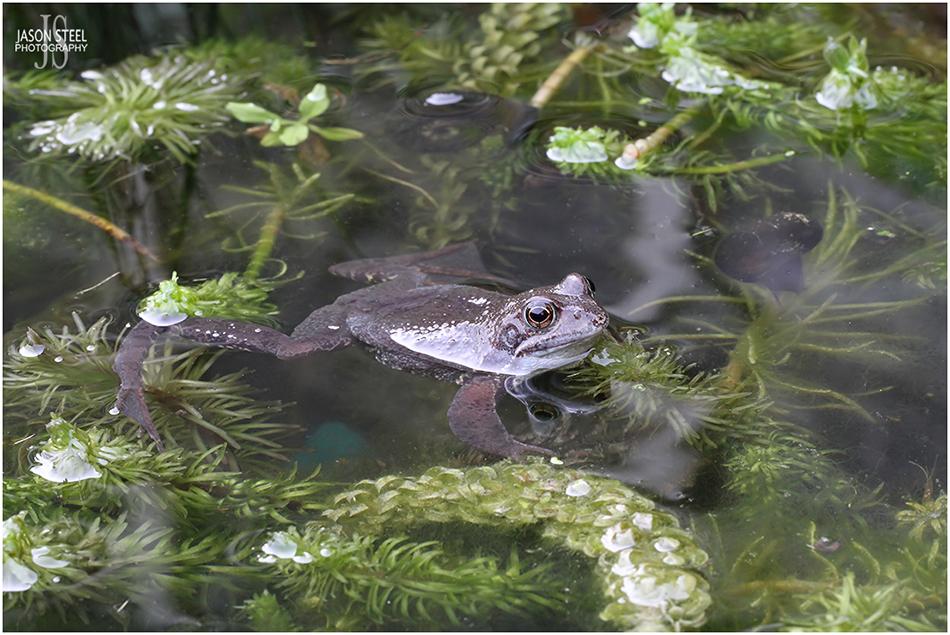
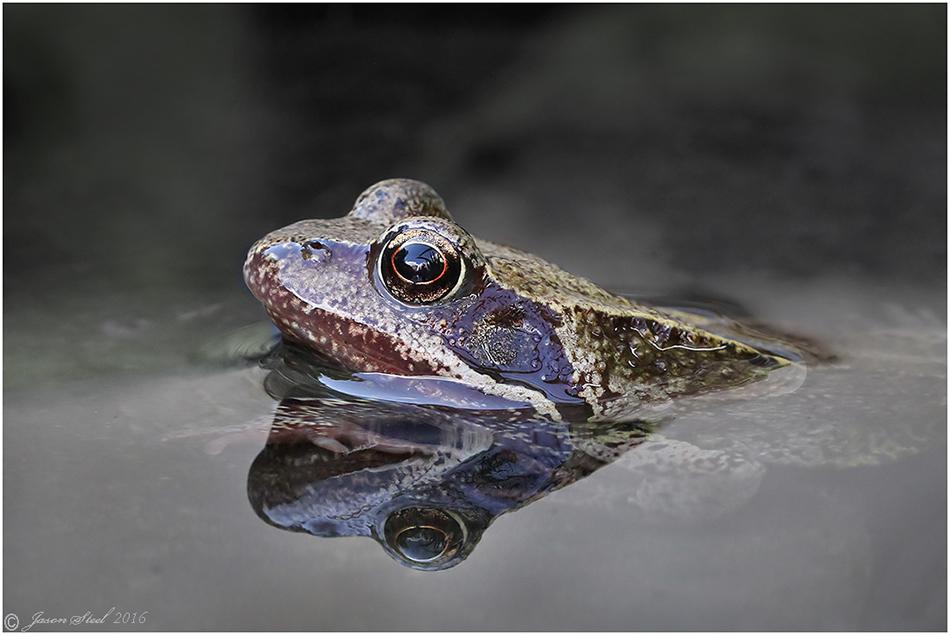
This adult female Common Frog was the first to discover my newly created garden pond in 2016.
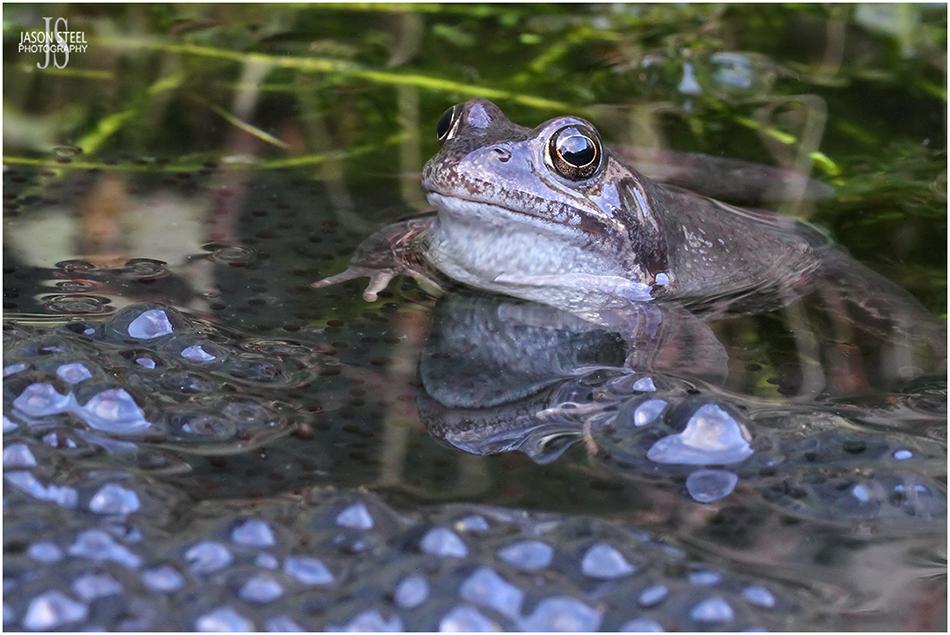
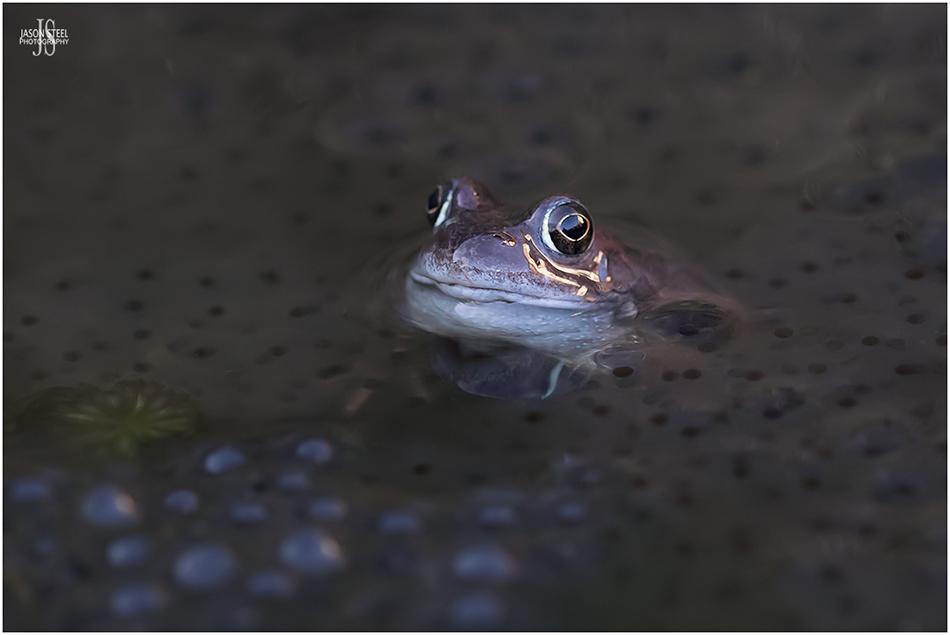
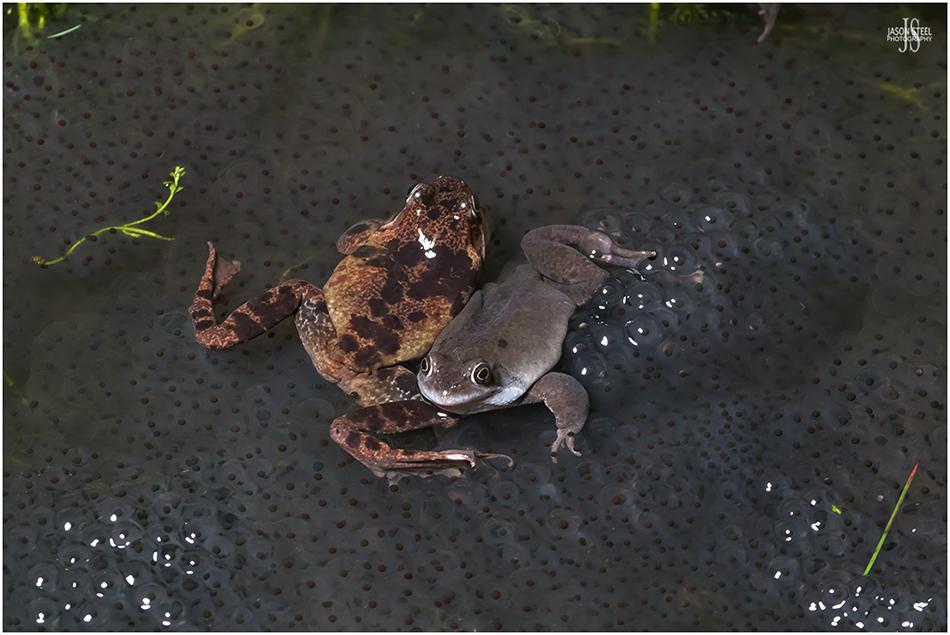
Click here for: Amphibians Page 2
All photos on this page were taken using the Canon 40D Camera and Canon EF 100mm f/2.8 L Macro IS USM lens